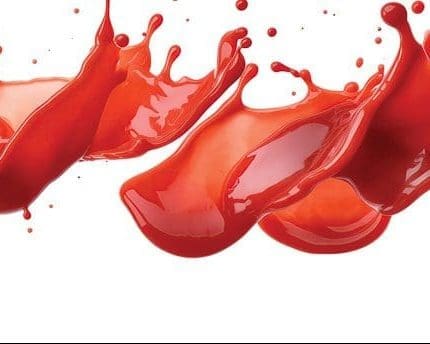By Josh Geiger Contributing Editor
Editor’s Note: A major part of the grilling experience here in the United States is the hamburger. For those gathering around the table, part of the experience is the choice of condiment. Who would have imagined that the history of that red stuff everybody loves was so complicated.
It is appropriate that one of the first tomato ketchup recipes appeared in an American cookbook by Sandy Addison in 1801. Another early tomato ketchup recipe appears in an English cookbook in 1817, but calling back to its fish gut sauce origin, it still included a half pound of anchovies and appeared alongside walnut, mushroom, pudding and oyster ketchup recipes. James Mease invented a tomato ketchup in 1812, and Thomas Jefferson’s cousin Mary Randolph included a tomato recipe in her 1824 cookbook The Virginia Housewife.
Ketchup recipes in the early 1800s were either made at home or sold in small batches by local farmers. This changed by 1837 when Jonas Yerkes became possibly the first person to sell ketchup in quart and pint bottles. Other manufacturers followed suit, but issues soon arose. Tomatoes had a short growing season, so farmers preserved tomato pulp to use year round. With no regulation and a carelessness typical of the age, vats of stored tomato pulp became infested with mold, yeast, spores and bacteria, but was bottled anyway. In 1866, one author described ketchup as “filthy, decomposed and putrid.”
Some producers only made ketchup as a byproduct of tomato canning, using leftover pieces of tomato they sometimes swept off the floor. Producers made up for these failings by filling their ketchups with preservatives like boric and salicylic acids, and added coal tar to dye the stuff red. An 1896 study of commercial ketchups determined that more than 90 percent of them contained “injurious ingredients.”
Enter Henry J. Heinz. Heinz formed the Heinz and Noble Company with a friend in 1860, first producing horseradish sauce in clear glass bottles so buyers could see the sauce wasn’t spoiled. He would later patent his iconic octagonal glass bottle, which had a narrow neck to prevent air contact from discoloring the product. The company grew rapidly, but went bankrupt in the aftermath of the pandemic of 1873. In 1876, he formed a new business, the F & J Heinz Company, with his brother and a cousin. One of their first products was Heinz Ketchup, first introduced with the spelling “catsup.” At the time, neither spelling was standard, but as a general rule in the 1800s, British imports used the term “ketchup,” while domestic American brands preferred “catsup.” It is partially thanks to Heinz’s decision to favor the “ketchup” spelling that would help it become the most prevalent spelling today.
Heinz ketchup was thicker than most ketchups of the time, and he took some inspiration from German ketchups, which combined sugar and vinegar to emphasize a sweet and sour mix of flavors. G.F. Mason, Heinz’s food scientist, created a preservative-free ketchup using vinegar to prevented spoilage, along with sugar and salt. His clear bottles could prove that his ketchup wasn’t “putrid.” This also altered the taste of ketchup to what we know today.
Heinz’s preservative-free ketchup was on the market by 1906 when he produced 5 million bottles of the stuff. The recipe had a downside though. It made his ketchup $.10 or $.20 more expensive than his competitors. This, coupled with his desire to market Heinz as the leader in safe-food manufacturing, is why he was a vocal supporter of the Food and Drug Act. Heinz’s son, Howard, argued to President Roosevelt that, though the regulation might cost companies money, it would “inspire confidence in commercially prepared foods.”
The passage of the act and success of the Heinz company seemed to vindicate his strategy. Heinz ketchup has a 60 percent market share in the United States and even more in the United Kingdom. For Americans, ketchup is almost an institution, an integral part of 4th of July cookouts and partner to classic American foods. The military has spent billions on ketchup to keep soldiers in the red stuff. But perhaps no place symbolizes America’s relationship with ketchup better than the world’s largest catsup bottle, a unique painted water tower built in 1949 next to a now-defunct ketchup bottling plant outside of Collinsville, Ill.
Despite its close relationship with Americans, tomato ketchup is enjoyed throughout the world, and the United States doesn’t even necessarily eat the most per capita. In 2013, the United States was tied for fifth, behind the United Kingdom, Sweden, Norway, Finland and Canada.








